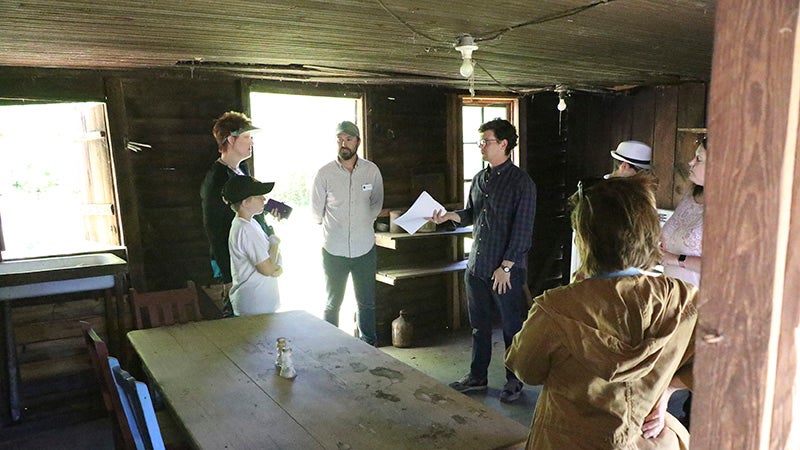Land Trust offers students tour of Shaw Homestead
Published 7:00 am Saturday, May 27, 2017

- A LOOK THROUGH TIME: Visitors to the Shaw Homestead stand in the kitchen, which was built separately from the rest of the home to protect it from fire. Wires can be seen stapled to the ceiling, evidence that the home was built long before electricity. Photo by Jeremy Pittari
Deep in a wooded plot of land off of Barth Road is one of the oldest homes still standing in Pearl River County, the Shaw Homestead.
It was donated to the Land Trust of the Mississippi Coastal Plain shortly after Hurricane Katrina by the heirs; prior to that it sat mostly unoccupied after the last occupant, Melvina Shaw, evacuated to stay with family in 1969 just before Hurricane Camille. She never returned permanently.
Now, the Land Trust is working to restore the old home, which stands as a testament to the way Pearl River County residents lived before electricity and running water were standard amenities in every home.
The home received electricity in the 1950’s when Coast Electric began running lines in the county at that time, said Hershel Ladner. Ladner, who lives a short distance from the Homestead, remembers that time well. At 83-years-old, he grew up in Pearl River County and on a few occasions stayed at the Shaw Homestead while helping the family with chores that ran into the night.
He made a visit to the home to help Land Trust hold a tour of the property for a group of homeschooled students and their families. During the event, Ladner shared tales of what it was like to live in South Mississippi during that time.
Perched on the porch of the home, he told the visitors about earmarking, a method to identify livestock that belonged to each family, and the laws that forced livestock owners to “dip” their sheep using a narrow concrete “ditch” to protect the livestock from parasites. The dip on the Shaw Homestead still exists.
In that time many people lived in dogtrot houses such as the Shaw home, small log homes built one room at a time. When more rooms were needed, logs of heart pine were used due to its resinous nature that prevents rot. Many of those logs used to construct the home in the late 1880s still make up the Shaw Homestead, though renovation work has occurred on the site.
During the tour, visitors learned how the structures on the site were constructed, why they were built separately and how food was made and stored. In that time in history, the residents were self-sufficient, growing and canning everything they would need to survive, including meat. One of the structures on the site that was disassembled and reconstructed was the canning shed. Contactor Jesse Loya was employed to conduct that and a variety of other improvements on the property in 2010. He’s been working on various projects on the property since. Loya said while most of the original wood was unaffected by rot or insects, many pieces of the structure in the canning shed had to be replaced.
He also repaired the main home, installing a new metal roof, repairing both chimneys and conducting repairs to the foundation where needed. Thursday, visitors got to see him construct a replica of a corn crib, a log structure used to store the crop.
Several other structures are planned for renovation, when funds can be found, said Judy Steckler, executive director of the Land Trust. One of buildings includes the smoke house, which Ladner said used to stand much taller than it does now due to the foundation sinking into the ground.
Her ultimate goal is to open the property for educational purposes, such as the tour held Thursday. To do that, she would need a support system of volunteers and monetary donations.
As it stands now, the property is eye opening. Shannon Horskey, one of the parents who toured the property with her children, said the tour provided them with more than expected.
She said the tour was expected to only provide them with a view of the architecture, but they also received a history lesson.
A series of podcasts is available on the Land Trust’s website, at http://ltmcp.org/shaw-homestead/. Look for the “podcasts” link to the right of the page. To request a tour, contact the Land Trust.




